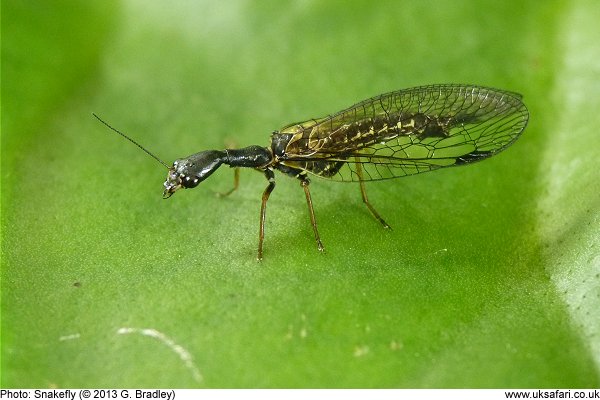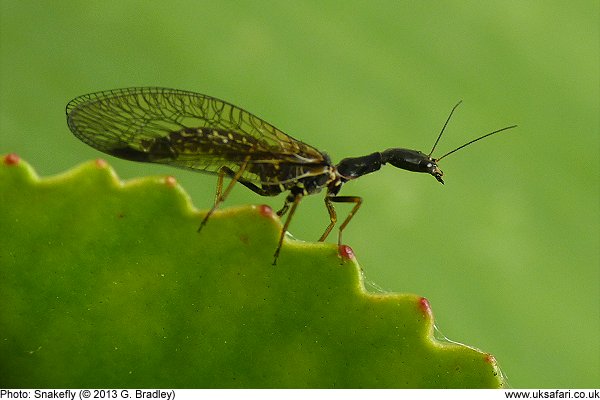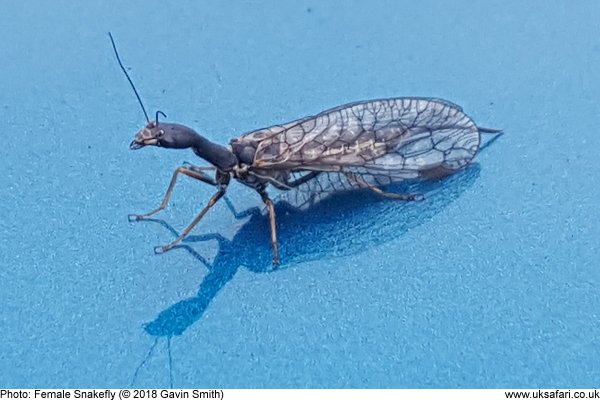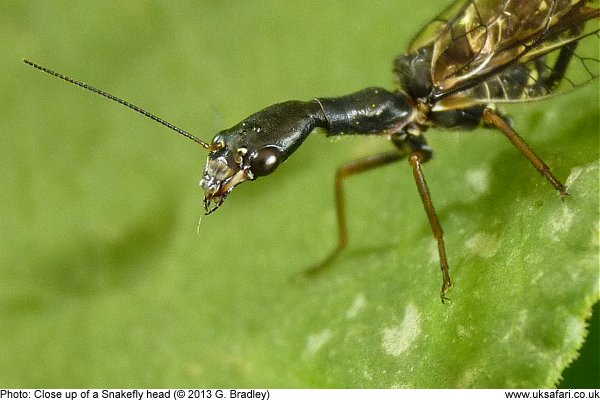 Quick Facts
Quick Facts
Scientific name: Raphidia notata
Size: Up to 15mm long. Wingspan 28mm
Distribution: Found throughout the U.K.
Months seen: May to September
Habitat: Gardens, parks and woodlands. Sometimes seen on the bark of oak trees.
Food: Adults and larvae feed on aphids, scale insects, springtails and other small invertebrates
Special features: Snakeflies get their name from their long 'necks' and broad flat heads which can be raised above the rest of their body giving the appearance of a snake about to strike. , and this one Raphidia notata which is found on oak trees.
Female snakeflies have an ovipositor (egg-laying tube) which is as long as their abdomen. They lay their eggs beneath the loose bark of oak trees during the summer months. The eggs hatch within three weeks and pupate in the autumn or the following spring. The adult flies usually emerge in May.
There are three other species of snakefly in the UK, but they are all found on conifer trees (Raphidia confinis, Inocellia Crassicornis and Raphidia maculicollis).
 Related Pages
Related Pages

 Popular Pages
Popular Pages
Amphibians, Bats, Badgers, Beetles, Birds, Birds of Prey, Bumble Bees, Butterflies, Caterpillars, Creepy-Crawlies, Deadly Spiders, Dolphins, Dragonflies, E-Postcards, False Widow Spiders, Free Newsletter, Frogs, Fungi, Garden Spiders, Glow-Worms, Grey Squirrels, Hedgehogs, House Spiders, Ladybirds, Mammals, Marine Mammals, Moths, Owls, Reptiles, Spiders, Toads, Trees, Wildlife Hospitals
© Copyright 2017 G. Bradley - UK Safari | About Us | Links | Contributors


 Snakeflies
Snakeflies





